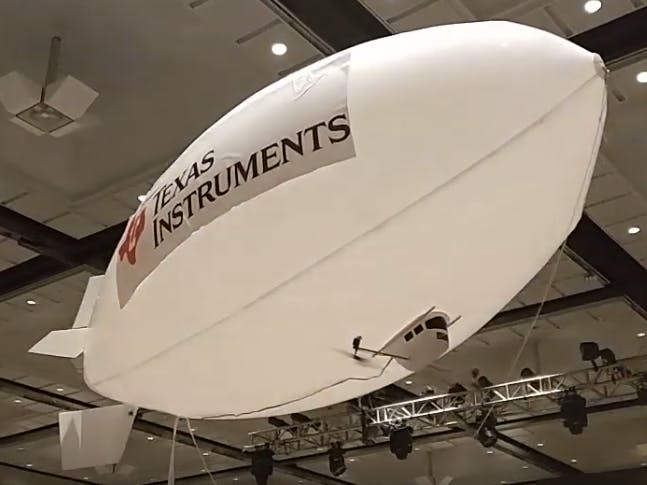#include <SPI.h>
#include <AIR430BoostFCC.h>
#include "Energia.h"
#include "Screen_HX8353E.h"
Screen_HX8353E myScreen;
const int joyX = A5;
const int joyY = A3;
uint16_t colour = redColour;
#define ANALOG_HALFVCC_INPUT A11
// -----------------------------------------------------------------------------
/**
* Global data
*/
// Data to write to radio TX FIFO (60 bytes MAX.)
//unsigned char txData[6] = { 'S', '\0', '\0', '\0', '\0', '\0' };
struct sPacket
{
uint8_t from;
int rud;
int Dir;
int lPWM;
int rPWM;
int motor;
};
struct sPacket txData;
struct rPacket
{
uint8_t from;
int vcc;
};
struct rPacket rxData;
int analogTmp = 0; //temporary variable to store
int throttle, direct = 0; //throttle (Y axis) and direction (X axis)
int leftMotor,leftMotorScaled = 0; //left Motor helper variables
float leftMotorScale = 0;
int rightMotor,rightMotorScaled = 0; //right Motor helper variables
float rightMotorScale = 0;
float maxMotorScale = 0; //holds the mixed output scaling factor
int deadZone = 10; //jostick dead zone
int btn1 = 0;
int btn2 = 0;
int btn3 = 0;
int rud;
int rssi = 0;
int getVCC() {
// start with the 1.5V internal reference
analogReference(INTERNAL1V5);
int data = analogRead(ANALOG_HALFVCC_INPUT);
// if overflow, VCC is > 3V, switch to the 2.5V reference
if (data==0xfff) {
analogReference(INTERNAL2V5);
data = (int)map(analogRead(ANALOG_HALFVCC_INPUT), 0, 4096, 0, 5000);
} else {
data = (int)map(data, 0, 4096, 0, 3000);
}
analogReference(DEFAULT);
return data;
}
//-----------------------------------------------------------------------------
// Debug print functions
void printTxData()
{
Serial.print("Rud, Dir, leftPWM, rightPWM, Payl: ");
Serial.print(txData.rud);
Serial.print(", ");
Serial.print(txData.Dir);
Serial.print(", ");
Serial.print(txData.lPWM);
Serial.print(", ");
Serial.print(txData.rPWM);
Serial.print(", ");
Serial.println(txData.motor);
}
void printRxData()
{
Serial.print("RxVcc, rssi: ");
Serial.print(rxData.vcc);
Serial.print(", ");
Serial.println(rssi);
}
// -----------------------------------------------------------------------------
// Main example
void setup()
{
Serial.begin(19200);
myScreen.begin();
pinMode(33, INPUT_PULLUP); //configure motor tilt switches
pinMode(32, INPUT_PULLUP);
pinMode(P2_1, INPUT_PULLUP); //Pullup for LP S1 and S2
pinMode(P1_1, INPUT_PULLUP);
pinMode(5, INPUT_PULLUP); //Pullup for thumbstick button (payload)
// The radio library uses the SPI library internally, this call initializes
// SPI/CSn and GDO0 lines. Also setup initial address, channel, and TX power.
Radio.begin(0x04, CHANNEL_2, POWER_MAX);
delay(100);
txData.from = 0x04;
}
void loop()
{
//aquire the analog input for Y and rescale the 0..1023 range to -255..255 range
analogTmp = analogRead(joyY);
throttle = -(2048-analogTmp)/8;
delayMicroseconds(100);
//...and the same for X axis
analogTmp = analogRead(joyX);
direct = -(2048-analogTmp)/8;
rud = map(analogTmp, 0,4096,25,155);
//mix throttle and direction
if(throttle >= -8){
leftMotor = throttle+direct;
rightMotor = throttle-direct;
}
else{
leftMotor = throttle-direct;
rightMotor = throttle+direct;
}
//calculate the scale of the results in comparision base 8 bit PWM resolution
leftMotorScale = leftMotor/255.0;
leftMotorScale = abs(leftMotorScale);
rightMotorScale = rightMotor/255.0;
rightMotorScale = abs(rightMotorScale);
//choose the max scale value if it is above 1
maxMotorScale = max(leftMotorScale,rightMotorScale);
maxMotorScale = max(1,maxMotorScale);
//and apply it to the mixed values
leftMotorScaled = constrain(leftMotor/maxMotorScale,-255,255);
rightMotorScaled = constrain(rightMotor/maxMotorScale,-255,255);
//Read button values for motor tilt and payload dropper
btn1 = digitalRead(32); //read push button to move motor angle
btn2 = digitalRead(33); //read push button to move motor angle
btn3 = digitalRead(5); //read push button to activate payload
if(btn2 == 0){ //increase motor angle
txData.motor = 1;
}
else if(btn1 == 0){ //decrease motor angle
txData.motor = 2;
}
else if(btn3 == 0){ //payload dropper
txData.motor = 3;
}
else{
txData.motor = 0;
}
// Store data in array for transmission
txData.rud = rud;
txData.lPWM = leftMotorScaled;
txData.rPWM = rightMotorScaled;
// Load the txData into the radio TX FIFO and transmit it to the broadcast
// address.
printTxData(); // TX debug information
Radio.transmit(0x03, (unsigned char*)&txData, sizeof(txData));
while (Radio.busy());
if (Radio.receiverOn((unsigned char*)&rxData, sizeof(rxData), 1000) > 0)
{
if(rxData.from == 0x03)
{
int data = getVCC();
rssi = Radio.getRssi();
printRxData();
myScreen.gText(0, myScreen.screenSizeY()-myScreen.fontSizeY(),
"Left=" + i32toa((int16_t)leftMotorScaled, 1, 0, 4),
colour);
myScreen.gText(0, myScreen.screenSizeY()-2*myScreen.fontSizeY(),
"Right=" + i32toa((int16_t)rightMotorScaled, 1, 0, 4),
colour);
myScreen.gText(0, myScreen.screenSizeY()-3*myScreen.fontSizeY(),
"TX Batt= " + i32toa((int16_t)data, 1000, 3, 5) + "V",
colour);
myScreen.gText(0, myScreen.screenSizeY()-4*myScreen.fontSizeY(),
"RX Batt= " + i32toa((int16_t)rxData.vcc, 1000, 3, 5) + "V" ,
colour);
myScreen.gText(0, myScreen.screenSizeY()-5*myScreen.fontSizeY(),
"RSSI=" + i32toa((int16_t)rssi, 1, 0, 5) + "dBm",
colour);
}
}
//To do: throttle change limiting, to avoid radical changes of direction for large DC motors
delay(10);
}














Comments
Please log in or sign up to comment.